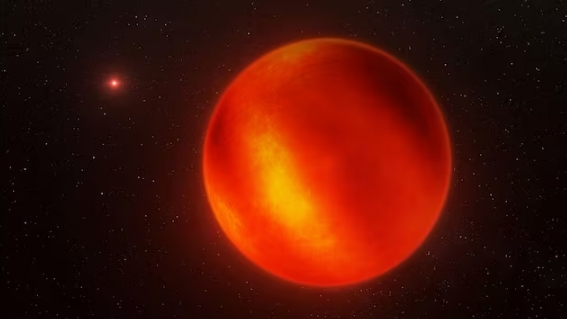🌌 Ever wondered what the weather's like on other worlds? Brace yourselves because the James Webb Space Telescope just gave us a sneak peek into the wild weather of the two closest brown dwarfs—and it's like nothing we've ever seen! 🌠
A Cosmic Weather Report Like No Other ☄️
Imagine a place where temperatures soar to a sizzling 925°C (that's hotter than a volcanic eruption! 🌋), and the atmosphere is a swirling mix of toxic gases and silicate clouds—think giant cosmic dust storms made of tiny sand particles! 😱
So, What's a Brown Dwarf Anyway? 🤔
Brown dwarfs are the ultimate cosmic middle child—not quite a star, but more than a planet. They glow with their own heat but don't have enough mass to kick off nuclear fusion like stars do. Basically, they're like the universe's failed stars, but way cooler (or hotter, actually! 🔥).
Unveiling the Mysteries with Webb 🔭
The dynamic duo of brown dwarfs, orbiting each other just six light-years away (that's practically next door in space terms! 🚀), have been under the watchful eye of the James Webb Space Telescope. Scientists have mapped their atmospheres in 3D, uncovering layers upon layers of wild weather patterns as they rotate—one in seven hours, the other in just five! 🌀
Extreme Weather Fans, Rejoice! 🌪️
These brown dwarfs have atmospheres loaded with hydrogen and helium, sprinkled with water vapor, methane, and carbon monoxide. But the real kicker? Those scorching temperatures and silicate clouds make for weather that's out of this world—literally! It's like a never-ending, supercharged sandstorm. Can you imagine? 🤯
Why Should We Care? 🌍
Besides being utterly fascinating, studying these extreme weather patterns helps us understand more about our universe and even the potential conditions on exoplanets—the planets beyond our solar system. Who knows, maybe one day we'll find a planet with conditions just right for life! 🪐✨
So next time you think it's too hot outside, just remember—somewhere out there, it's a whole lot hotter! Stay curious, amigos! ✌️
Reference(s):
cgtn.com




